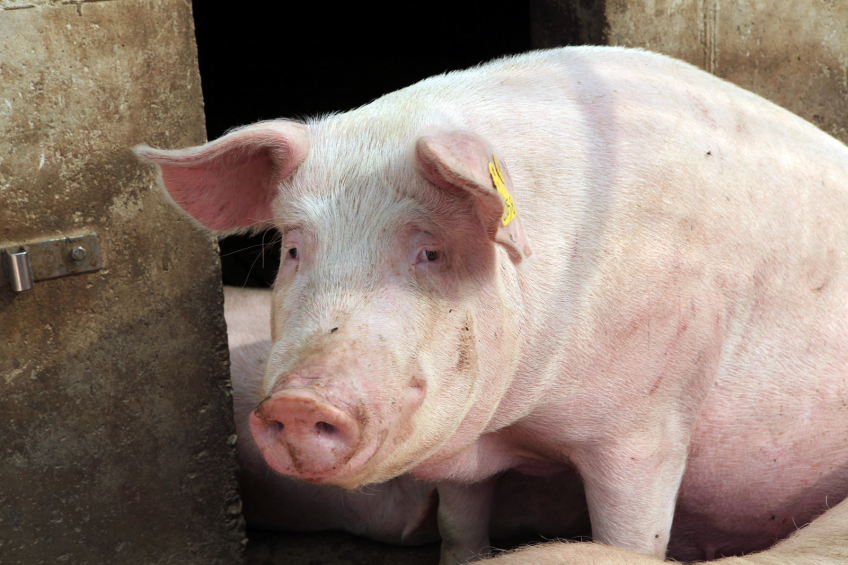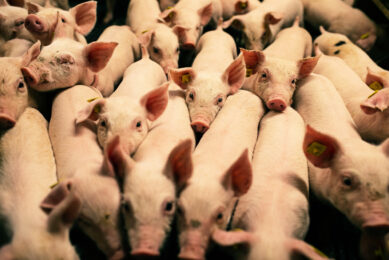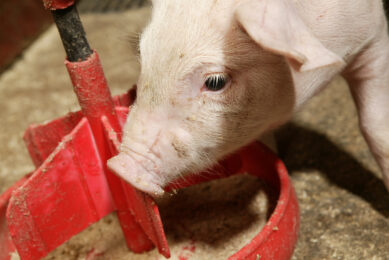Live yeast to fight constipation in sows

One of the more stressful moments in a sow’s life is no doubt the moments of farrowing. Constipation is a phenomenon which is often observed in the peripartum phase. It is vital to understand what is going on at gut level in order to help them.
By David Guillou, applied R&D manager monogastrics, Lallemand Animal Nutrition
Compared to other animal species, the reproductive efficiency of pigs is very high. It is this trait that constitutes one of many reasons why the pig industry has become a worldwide success. However, in contrast to piglets and finishing pigs, for which return-to-cost can be assessed almost directly, the reproductive sow has long received less attention from research bodies, especially when it comes down to nutrition.
Nevertheless, scientific models have been made to establish the relation between body reserves, foetal accretion, milk production and major nutrient intake.
These are very useful tools in order to design feeding programmes. However, the influence of feed on functional traits and the influence of functional feed ingredients on sow performance are not (yet) understood well enough to be included in these models.
Functional traits appear to be more qualitative than quantitative, and are best described as fitness or its opposite. This can be expressed as the percentage of individuals within a group failing to achieve expected performance, e.g. the percentage of sows not returning to oestrus within six days post-weaning.
Critical moments
During a sow’s reproductive cycle, two moments are critical for observing these functional traits: Around farrowing and just after weaning. They both represent a transition between very distinct physiological regulations, and problems of adaptation are frequently encountered, often referred to as ‘syndromes’. The situation of the peripartum transition is the more complex of the two and affects both sows as well as piglets.
This article further describes how the use of a functional feed ingredient, live Saccharomyces cerevisiae CNCM-I 1079 (S.c. boulardii), can improve sow fitness.
Metabolic changes
During the last two weeks of gestation, profound metabolic changes occur, like initiation of galactogenesis (synthesis of colostrum and milk elements). As a consequence, the udder develops and becomes clearly visible. The timing of the underlying changes in the hormonal pattern has been heavily studied in ruminants and results have been partially confirmed in sows. Farrowing is preceded by behavioural changes, as well as changes in the immune system, a different appetite, etc. Among these changes is a reduction of smooth muscle contractions. This is safe for foetuses as it prevents abortion. It is not safe, however, for the digestive transit as the smooth muscles around the colon are affected as well.
This phenomenon often leads to mild or severe constipation; it may be reinforced by other simultaneous developments like dietary change (feed composition, presentation, daily allowance, feeding time) as well as the transfer from gestating house to farrowing crates. Direct visible signs of constipation are well known (no stools or small and dry faeces) but behaviour is often affected as well, in relation to abdominal pain: Sows lying on their belly or sitting like dogs, reluctant to stand up and highly nervous. These symptoms could partially originate from changes expected in the microflora due to the increased retention of digesta in the hindgut.
In a first phase, the bacterial population develops as the intestinal contents have an increased time to ferment. This is followed by a phase of bacterial cell mortality with the nutrient shortage leading to release of endotoxins. These are highly pro-inflammatory molecules; in humans, a high concentration is associated to abdominal pain. In sows, in the ten days prior to farrowing, there have been reports of a sharp increase of faecal lipopolysaccharides (LPS – endotoxins from gram-negative bacteria), see Table 1.
Live yeast effect
Several trials have been conducted in order to study the effect of live S.c. boulardii on transit time and constipation.
A first study consisted in measuring the motion (kinetics) of faecal ash excretion in sows fed live S.c. boulardii. Within a larger trial involving 112 sows on a French farm, 14 were chosen for this study. On the morning prior to the transfer from the gestation to the farrowing room, they were fed 100 g of diatomaceous earth in one meal, almost pure silica, totally indigestible ash. Seven sows received a bolus with S.c. boulardii (providing the equivalent of 2×106 cfu/g feed) on top of regular diet and the seven remaining received just a control diet.
Faeces were scored and collected twice a day during the following six days. Collected faeces were analysed for total ash. In both treatments, there was no faecal sample to be collected until 24 hours after transfer. Very irregular excretory patterns were observed in the control sows, including clinical constipation. One sow did not excrete any stool during the trial, another one produced first stool after 4.5 days. No peak of excretion could be derived from these observations. On the contrary, sows fed S.c. boulardii showed a regular excretory pattern and especially homogeneity between individuals. A peak of faecal ash could be observed, between 48 and 72 hours post-ingestion of indigestible ash. These results indicate that live S.c. boulardii helps regulating the digestive transit after transfer from gestation to farrowing rooms, and decreases the risk of constipation.
In absence of clinical constipation, the influence of S.c. boulardii on sow gut physiology remains easy to observe. As is shown in Figure 1, faecal scoring can provide evidence for the transit slowdown. Such a method is relevant for daily follow-up of sows pre-farrowing.
Reducing constipation and associated behaviours has further implications as this eases the farrowing process, enhances piglet vitality at birth, and improves lactation onset as well as appetite. Many pieces of the mode of action are being gathered, including deep sequencing of gut microflora. This all adds to understanding of the metabolism process – especially the kinetics of hydrolysis and fermentation of nutritional fibre; the feedback from the gut cell wall and immune system; and the relationship between gut, brain and other organs.
The puzzle is about to get solved. This increases the chance for fine-tuning the dietary regime including functional nutrition.






